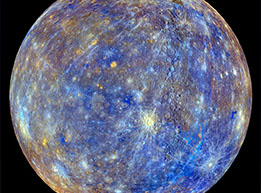In a discovery, researchers suggest that Mercury, the smallest planet in our solar system, may be hiding a staggering 11-mile thick layer of diamonds beneath its surface. This extraordinary finding has sent shockwaves through the scientific community, offering a fascinating glimpse into the planet’s mysterious interior.
According to the research team, the diamonds are believed to have formed over 4.5 billion years ago, during the planet’s early stages of development. The extreme pressure and temperature conditions on Mercury created an ideal environment for diamond formation, resulting in a vast underground layer.
To recreate these conditions, the researchers employed an anvil press, a machine typically used to produce synthetic diamonds. The experiment revealed that graphite, a common mineral found on Mercury, transformed into diamond crystals under the planet’s intense pressure and heat.
This discovery has significant implications for our understanding of planetary evolution and the internal structure of exoplanets with similar characteristics. The presence of diamonds on Mercury also raises questions about the planet’s geological history and potential for mineral deposits.
The European Space Agency and Japan Aerospace Exploration Agency’s BepiColombo mission, set to launch in 2025, will study Mercury from orbit and provide valuable insights into the planet’s interior. This mission may confirm the existence of the diamond layer, revolutionizing our understanding of Mercury and its place in our solar system.
As scientists continue to unravel the secrets of Mercury’s underground world, we may uncover even more surprises on this enigmatic planet.

